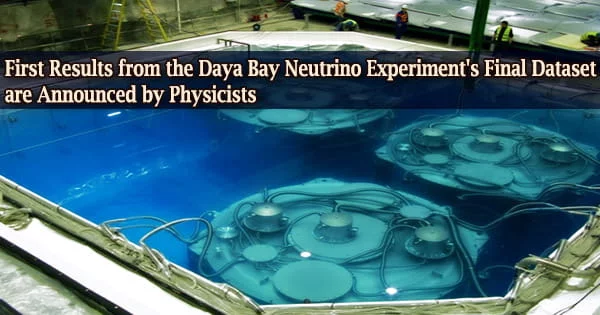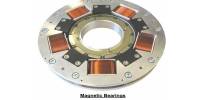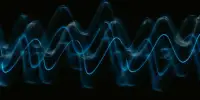The Daya Bay Reactor Neutrino Experiment recorded a record-breaking 5.5 million interactions from neutrino subatomic particles over the course of over nine years. Theta13, a crucial variable for comprehending how neutrinos change their “flavor,” has now been measured with the greatest level of precision, according to the Daya Bay collaboration’s worldwide team of physicists, who have released the first finding from the experiment’s complete dataset.
The finding, which was made public today at the Neutrino 2022 conference in Seoul, South Korea, will aid physicists in their investigation of some of the greatest riddles pertaining to the nature of matter and the cosmos.
Subatomic particles known as neutrinos are infamously hard to find and incredibly common. They continuously bombard the whole surface of the Earth at nearly the speed of light, but they seldom ever come into contact with matter. They can move through a lead layer the thickness of a lightyear without ever touching a single atom.
The capacity of these ghost-like particles to switch between three different “flavors” the muon neutrino, tau neutrino, and electron neutrino is one of its distinguishing features. The mixing angles and mass splittings, which determine the likelihood of those oscillations, are the subject of the Daya Bay Reactor Neutrino Experiment.
At the time Daya Bay was created in 2007, only one of the three mixing angles was unidentified: theta13. So, Daya Bay was created to more accurately and sensitively quantify theta13* than any other experiment.
The Daya Bay Reactor Neutrino Experiment, located in Guangdong, China, uses huge, cylindrical particle detectors submerged in water in three subterranean tunnels. The eight detectors detect antineutrinos coming from adjacent nuclear power facilities as light signals.
We’ve never detected differences between particles and antiparticles for leptons, the type of particles that includes neutrinos. We’ve only detected differences between particles and antiparticles for quarks. But the differences we see with the quarks aren’t enough to explain why there’s more matter than antimatter in the universe. It’s possible that neutrinos might be the smoking gun.
Kam-Biu Luk
Nuclear reactors produce large quantities of antineutrinos, which are neutrinos’ antiparticles. Daya Bay was constructed as a result of international collaboration and a ground-breaking partnership between China and the United States for a significant physics project.
China’s participation in the partnership is led by the Institute of High Energy Physics (IHEP) of the Chinese Academy of Sciences in Beijing, while U.S. Department of Energy (DOE) Lawrence Berkeley National Laboratory and Brookhaven National Laboratory jointly coordinate American participation.
Scientists from Daya Bay found electron antineutrinos, a particular type of neutrino, in each of the caverns below to calculate the value of theta13. Three caverns two close to the nuclear reactors and one farther away offer enough space for the antineutrinos to oscillate. Physics researchers determined how many electron antineutrinos changed flavors and, consequently, the value of theta13 by comparing the number of electron antineutrinos detected by the near and distant detectors.
In 2012, Daya Bay physicists measured theta13 conclusively for the first time ever, and as the experiment went on, they enhanced the measurement’s accuracy. Daya Bay has now operated for nine years, with data collecting ending in December 2020. Thanks to exceptional detector performance and committed data analysis, Daya Bay has greatly surpassed expectations.
Physics researchers have now measured the value of theta13 with a precision that is 2.5 times higher than the experiment’s design target after using the entire dataset. No other experiment, past or future, is anticipated to achieve such a fine degree of precision.
“We had multiple analysis teams that painstakingly scrutinized the entire dataset, carefully taking into account the evolution of detector performance over the nine years of operation,” said Daya Bay co-spokesperson Jun Cao of IHEP.
“The teams took advantage of the large dataset not only to refine the selection of antineutrino events but also to improve the determination of backgrounds. This dedicated effort allowed us to reach an unrivaled level of precision.”
Theta13’s precise measurement will make it easier for physicists to measure other neutrino physics characteristics and create more precise simulations of the interactions between subatomic particles.
Physics researchers may learn more about the imbalance between matter and antimatter in the universe by studying the characteristics and interactions of antineutrinos. According to physicists, the Big Bang produced an equal amount of matter and antimatter.
But if that were the case, these two opposites should have destroyed each other and left nothing but light in their wake. The current predominance of matter (and absence of antimatter) in the cosmos must be explained by some distinction between the two.
“We expect there might be some difference between neutrinos and antineutrinos,” said Berkeley physicist and Daya Bay co-spokesperson Kam-Biu Luk. “We’ve never detected differences between particles and antiparticles for leptons, the type of particles that includes neutrinos. We’ve only detected differences between particles and antiparticles for quarks. But the differences we see with the quarks aren’t enough to explain why there’s more matter than antimatter in the universe. It’s possible that neutrinos might be the smoking gun.”
The mass splitting was precisely measured by physicists using the most recent examination of Daya Bay’s final dataset. The frequency of neutrino oscillations is determined by this characteristic.
“The measurement of mass splitting was not one of Daya Bay’s original design goals, but it became accessible thanks to the relatively large value of theta13,” Luk said. “We measured the mass splitting to 2.3% with the final Daya Bay dataset, an improvement over the 2.8% precision of the previous Daya Bay measurement.”
The multinational Daya Bay cooperation plans to publish more findings from the full dataset in the future, including revisions to earlier observations. The Daya Bay findings will be used to properly measure and compare neutrino and antineutrino properties in future neutrino experiments like the Deep Underground Neutrino Experiment (DUNE).
DUNE, which is now being built, will offer physicists the chance to investigate neutrino behavior in a way that has never been possible, as well as the world’s most intense neutrino beam and subterranean detectors that are 800 miles apart.
“As one of many physics goals, DUNE expects to eventually measure theta13 almost as precisely as Daya Bay,” said Brookhaven experimental physicist and Daya Bay collaborator Elizabeth Worcester.
“This is exciting because we will then have precise theta13 measurements from different oscillation channels, which will rigorously test the three-neutrino model. Until DUNE reaches that high precision, we can use Daya Bay’s precise theta13 measurement as a constraint to enable the search for differences between neutrino and antineutrino properties.”
Researchers will also use the reactor neutrinos and the high theta13 value to ascertain which of the three neutrinos is the lightest.
“The precise theta13 measurement of Daya Bay improves the mass-ordering sensitivity of the Jiangmen Underground Neutrino Observatory (JUNO), which will complete construction in China next year,” said Yifang Wang, JUNO spokesperson, and IHEP director. “Furthermore, JUNO will achieve sub-percent level precision on the mass splitting measured by Daya Bay in several years.”
The Chinese Ministry of Science and Technology, the DOE Office of Science High Energy Physics program, the Chinese Academy of Sciences, the National Natural Science Foundation of China, and other financial organizations all sponsor the Daya Bay Reactor Neutrino Experiment. There are 237 participants in the Daya Bay partnership at 42 institutions in Asia, Europe, and North America.
Physicists measure theta13 in terms of its oscillation amplitude, or what is mathematically written as sin22θ13.
















